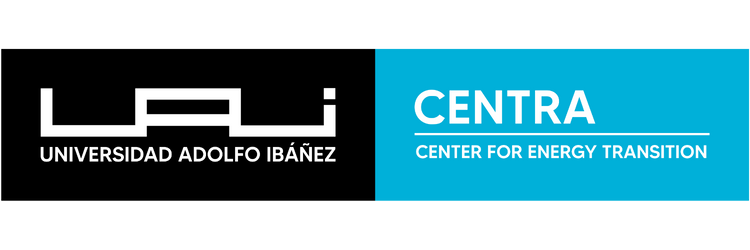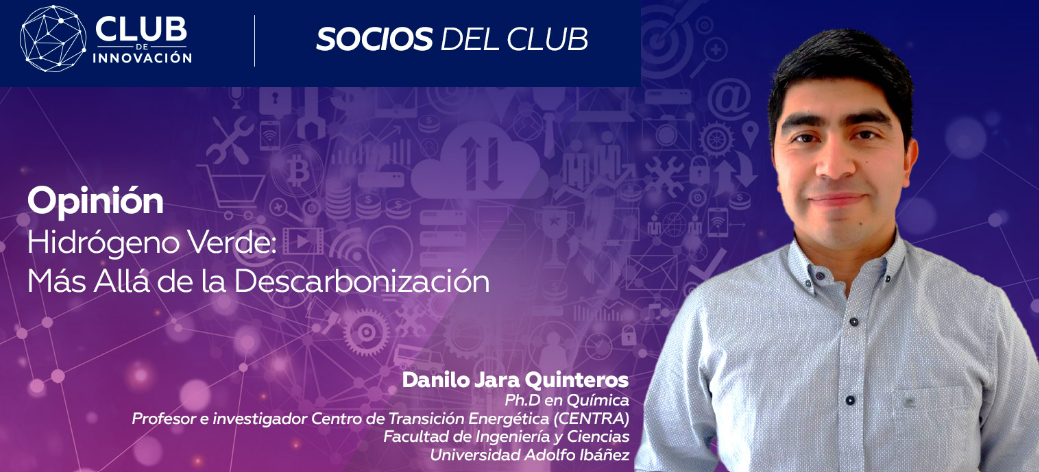Column by Danilo Jara. Green Hydrogen: Beyond decarbonisation.
October 20, 2022
The concept of “green hydrogen” seems to have become a mainstay in media, social networks, and discussions across Chile. And why not? Chile could play a crucial role in producing this simple yet challenging molecule at scale. It is essential, however, that the implementation process is approached prudently and with certainty, avoiding abrupt or uninformed changes. Major transitions always generate uncertainty, and green hydrogen is no exception. Often, uncertainty leads to partial responses that evolve into biases, potentially confusing the public. For this reason, discussions about green hydrogen and its large-scale implementation must be supported by updated and reliable scientific, statistical, and economic studies.
It is often assumed that green hydrogen will immediately replace fossil fuels as part of the global decarbonization or carbon neutrality plan by 2050, as if this were its sole purpose. Fossil fuels used in the energy sector are undoubtedly the main contributors to CO₂ emissions (73.2%, according to Our World in Data, 2016), the primary greenhouse gas driving accelerated global warming. Reducing these emissions is crucial.
However, there are at least three additional compelling reasons to seek alternatives to fossil fuels beyond the decarbonization agenda. Firstly, fossil fuels are non-renewable energy sources, estimated to deplete in the medium term: 49 years for natural gas, 54 years for oil, and 139 years for coal (Our World in Data, 2020). Sooner or later, we must move away from exploiting these resources.
Secondly, CO₂ emissions are not the only issue with fossil fuels. They also release substances like sulfur dioxide, nitrogen dioxide, volatile organic compounds, ozone, and particulate matter (PM), which cause air pollution. In 2015, an estimated 8.8 million people died due to air pollution, with 3.6 million deaths attributed to fossil fuel pollution (Lelieveld et al., 2019). Prolonged exposure to particulate matter, whether “coarse” (PM10, with an aerodynamic diameter between 2.5 and 10 microns) or “fine” (PM2.5, less than 2.5 microns), poses severe health risks, particularly to the respiratory system, and can be fatal. Recent studies show that 27.3% of PM2.5 is attributable to fossil fuel combustion, with half of it coming from coal (McDuffie et al., 2021).
Finally, the control of natural reserves, especially oil, enriches certain nations at the expense of others, often leading to conflicts throughout history.
Hydrogen emerges as one of the most promising alternatives to address these challenges because:
- It is environmentally harmless, producing only water as a byproduct when burned.
- It can be produced through various methods.
- It is both an energy vector and a raw material for key industrial applications.
Currently, however, more than 90 million tons of hydrogen are produced annually, with 96% derived from fossil fuels through methods like methane reforming, known as gray hydrogen. Of the hydrogen produced today, 46% is used in oil refining, 35% in ammonia production for fertilizers, 14% in methanol synthesis, and 5% in iron and steel production (IRENA, 2022).
The first step is to continue using fossil fuels for hydrogen production but with CO₂ capture (blue hydrogen). This can pave the way for developing and adopting production methods with minimal or no reliance on fossil fuels, such as water electrolysis or thermolysis using renewable energy (green hydrogen) or nuclear energy (pink hydrogen).
Since it is impossible to immediately stop using fossil fuels—either as an energy source or as a hydrogen production input—it is crucial to invest in and strengthen research and development for CO₂ capture, storage, and conversion into synthetic fuels. This approach allows continued use of fossil fuels while capturing the emitted CO₂ for geological storage or conversion into useful products, which is an ideal short-term decarbonization strategy but one that is rarely discussed. Each country must analyze its best strategy for hydrogen production based on its most abundant or promising primary energy source. Chile possesses unique solar and wind energy potential, which can produce hydrogen via water electrolysis at very low costs, explaining the current interest in green hydrogen in the country.
Scientific and engineering challenges for cost-effective green hydrogen production focus on reducing the cost of renewable electricity, lowering the cost of electrolyzers, and improving hydrogen storage and transportation methods. While concerns about water scarcity in green hydrogen production have been raised, multiple studies refute these claims.
To truly position Chile as a global leader in green hydrogen, it is essential to meet the goals outlined in the government’s strategic plan. Additionally, one missing component in this plan is incorporating public opinion by fostering the adoption of new technologies and processes. It is critical to raise awareness of green hydrogen’s importance for Chile and the planet’s future through initiatives targeting municipalities, schools, universities, and industries.
At the Faculty of Engineering and Sciences and the Energy Transition Center (CENTRA) at Universidad Adolfo Ibáñez, we are committed to this goal through initiatives like the Vive la Energía program.

